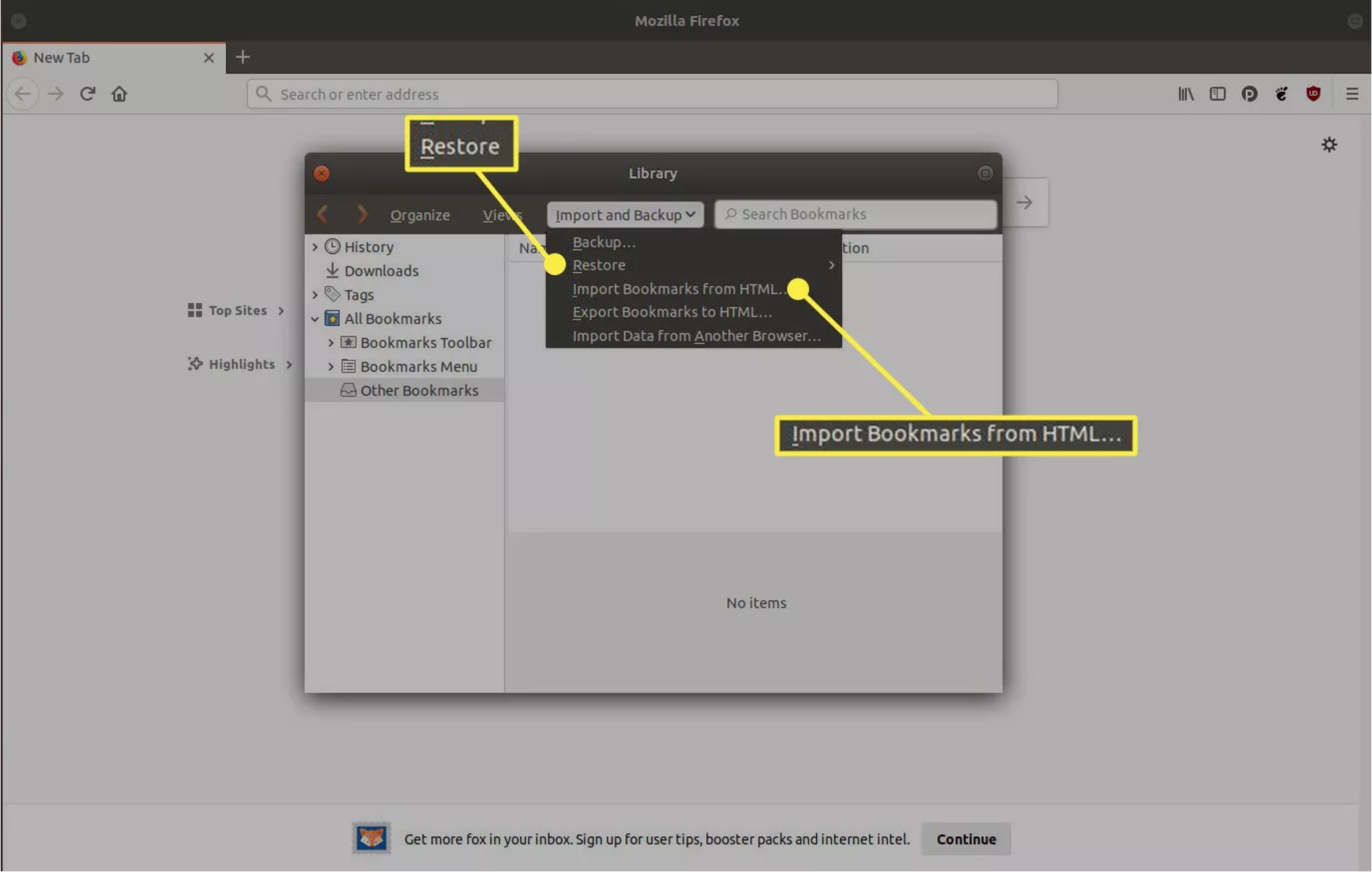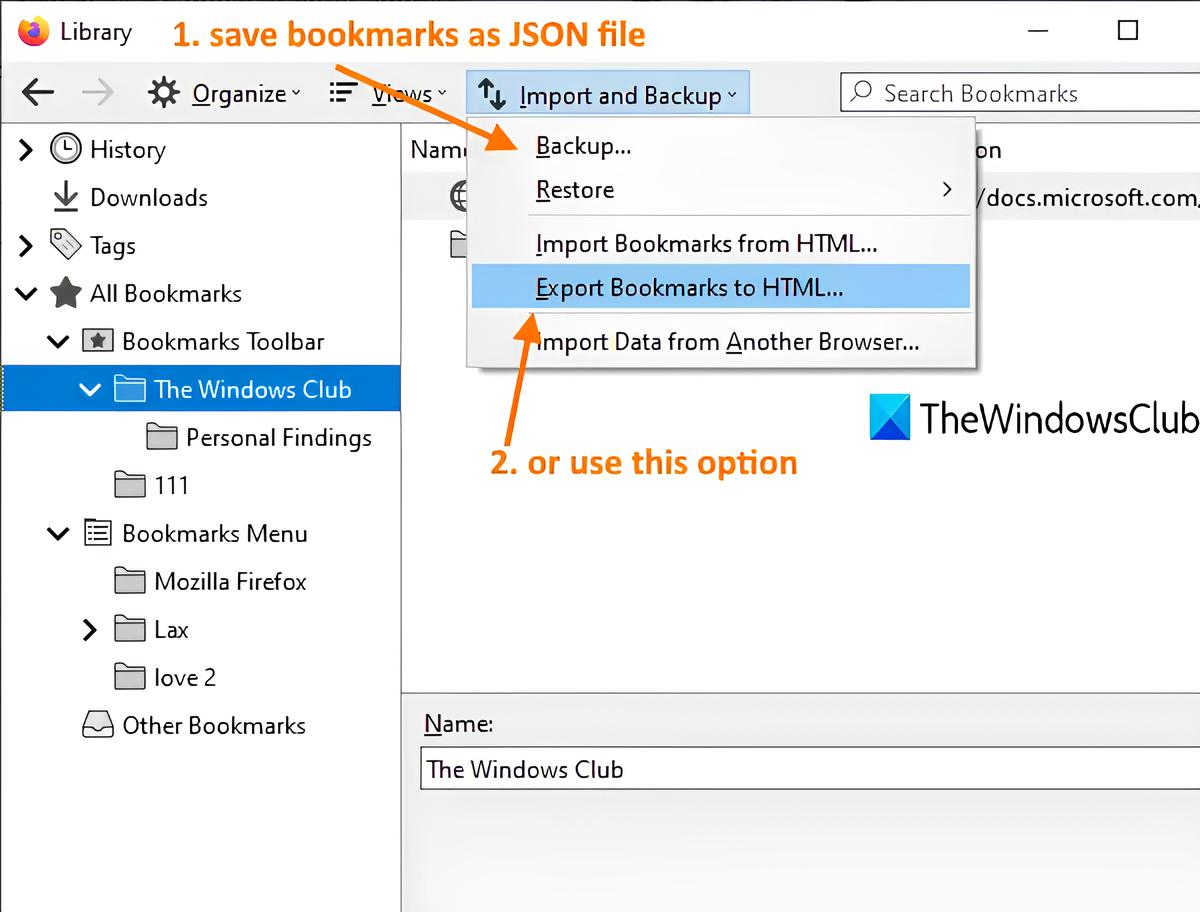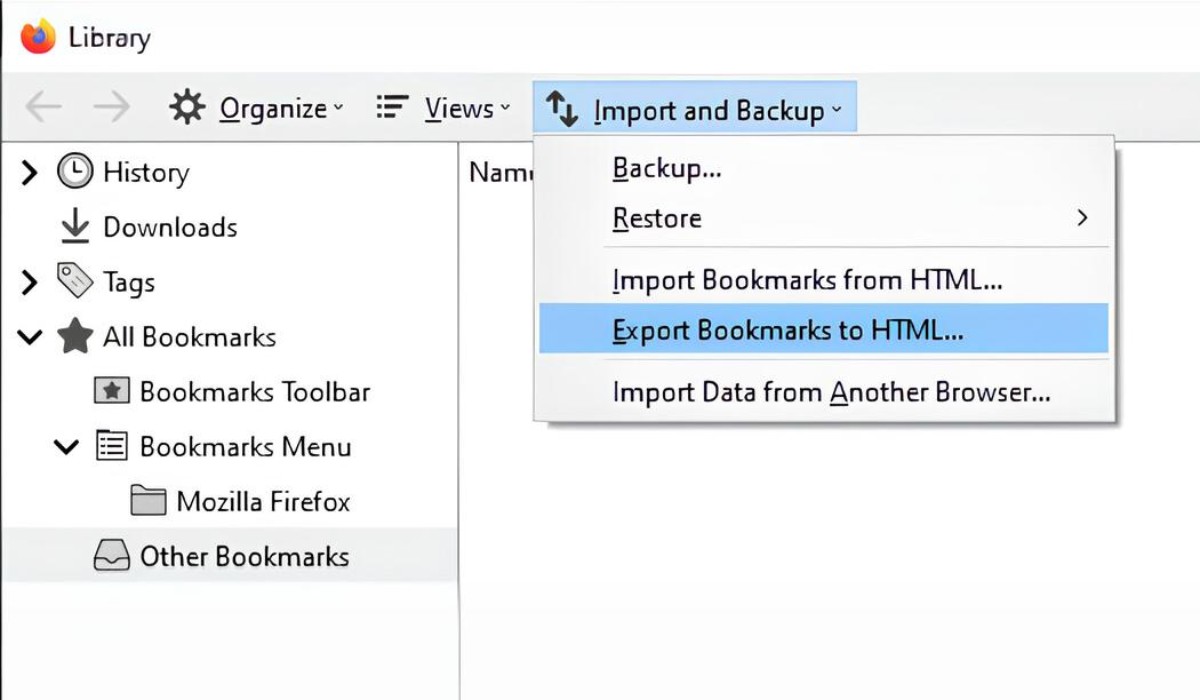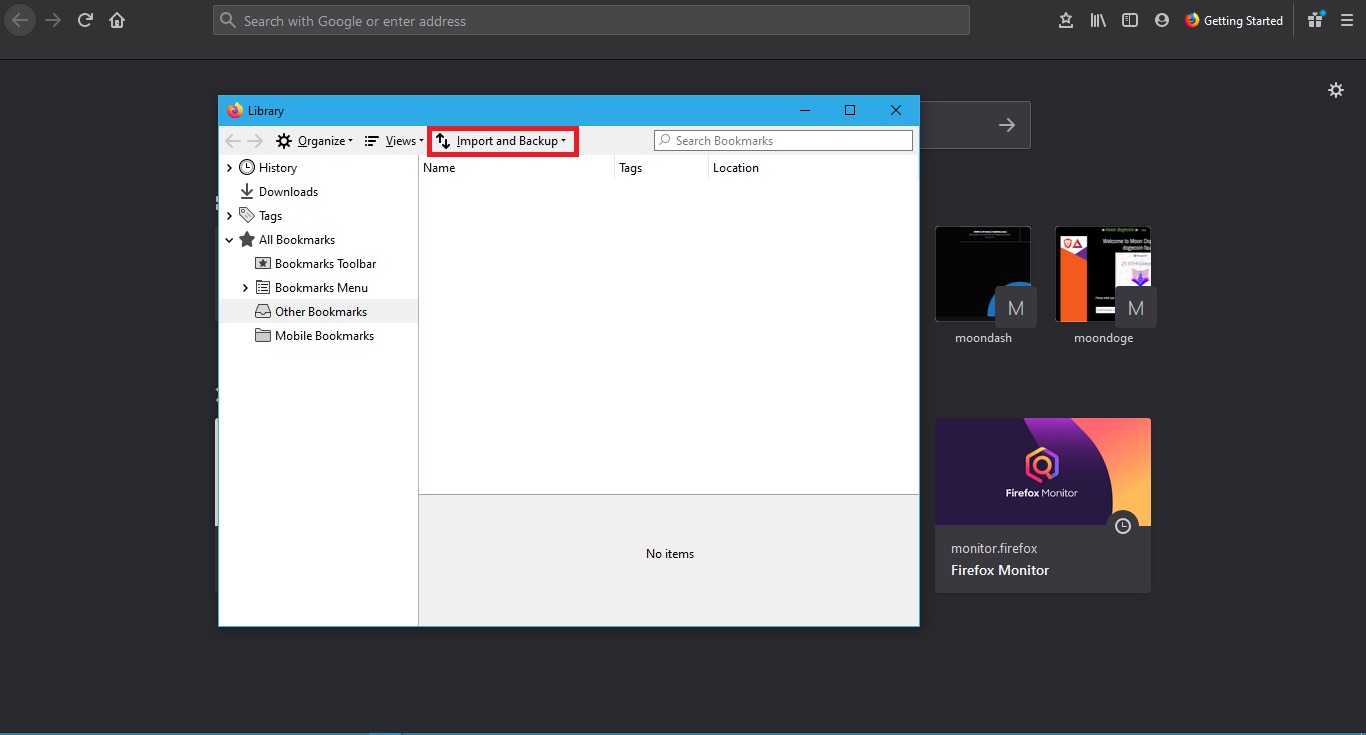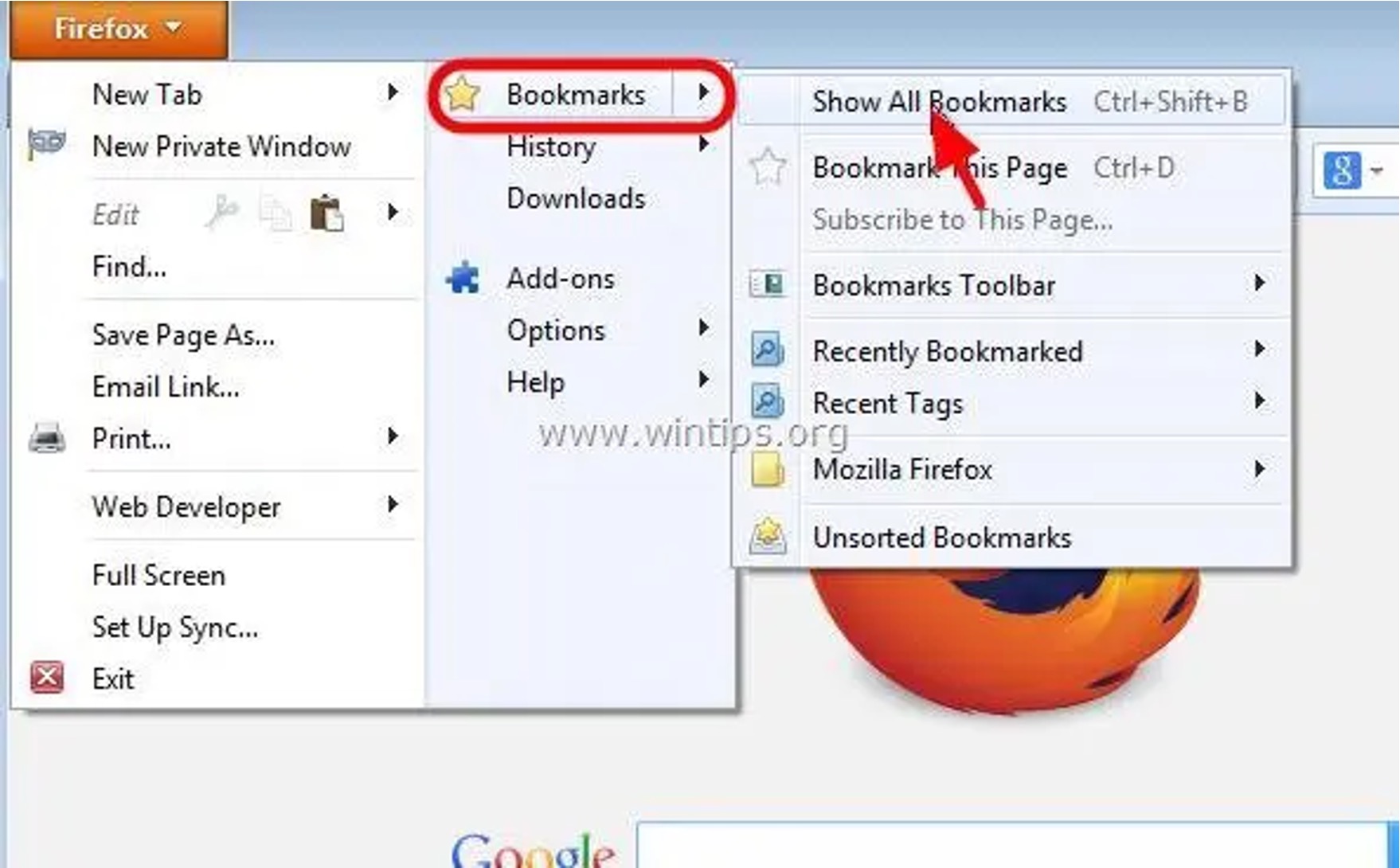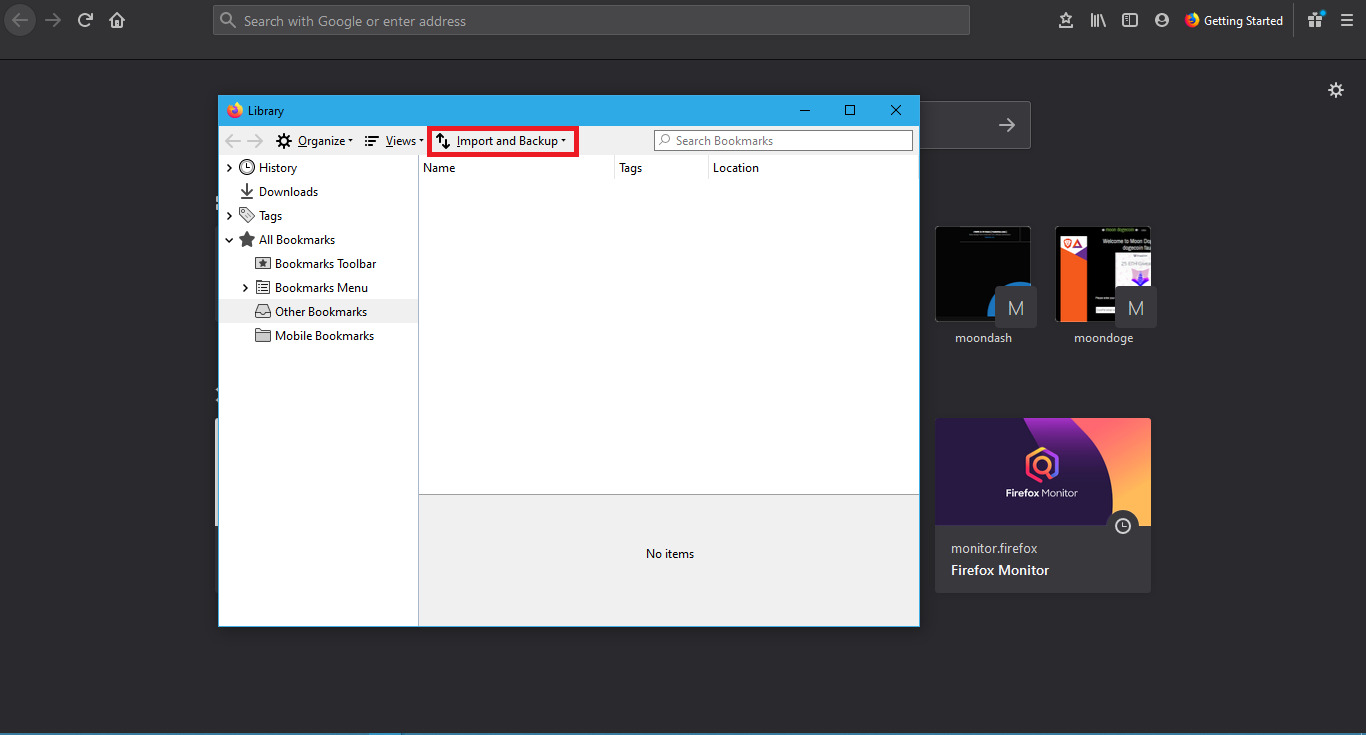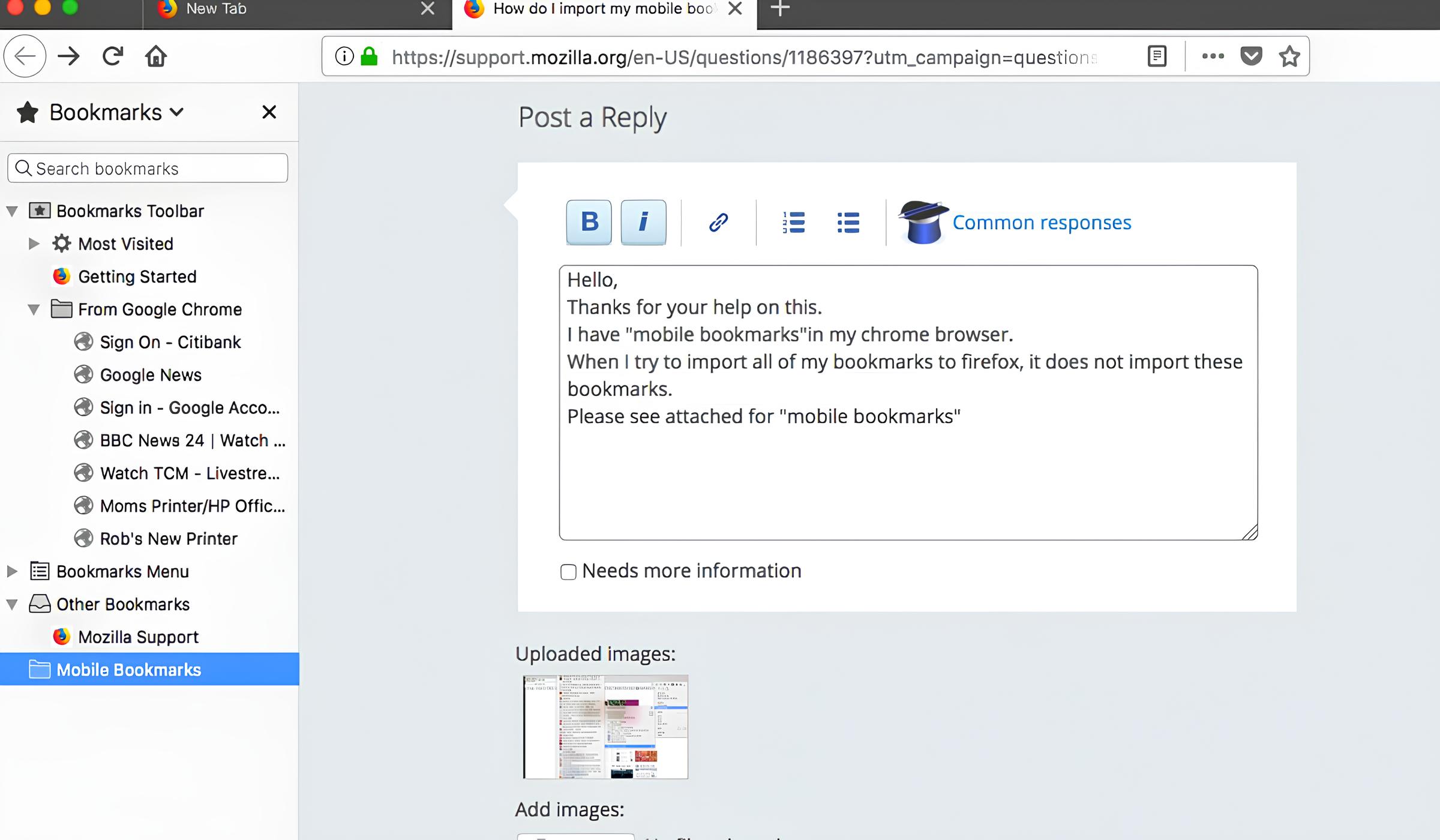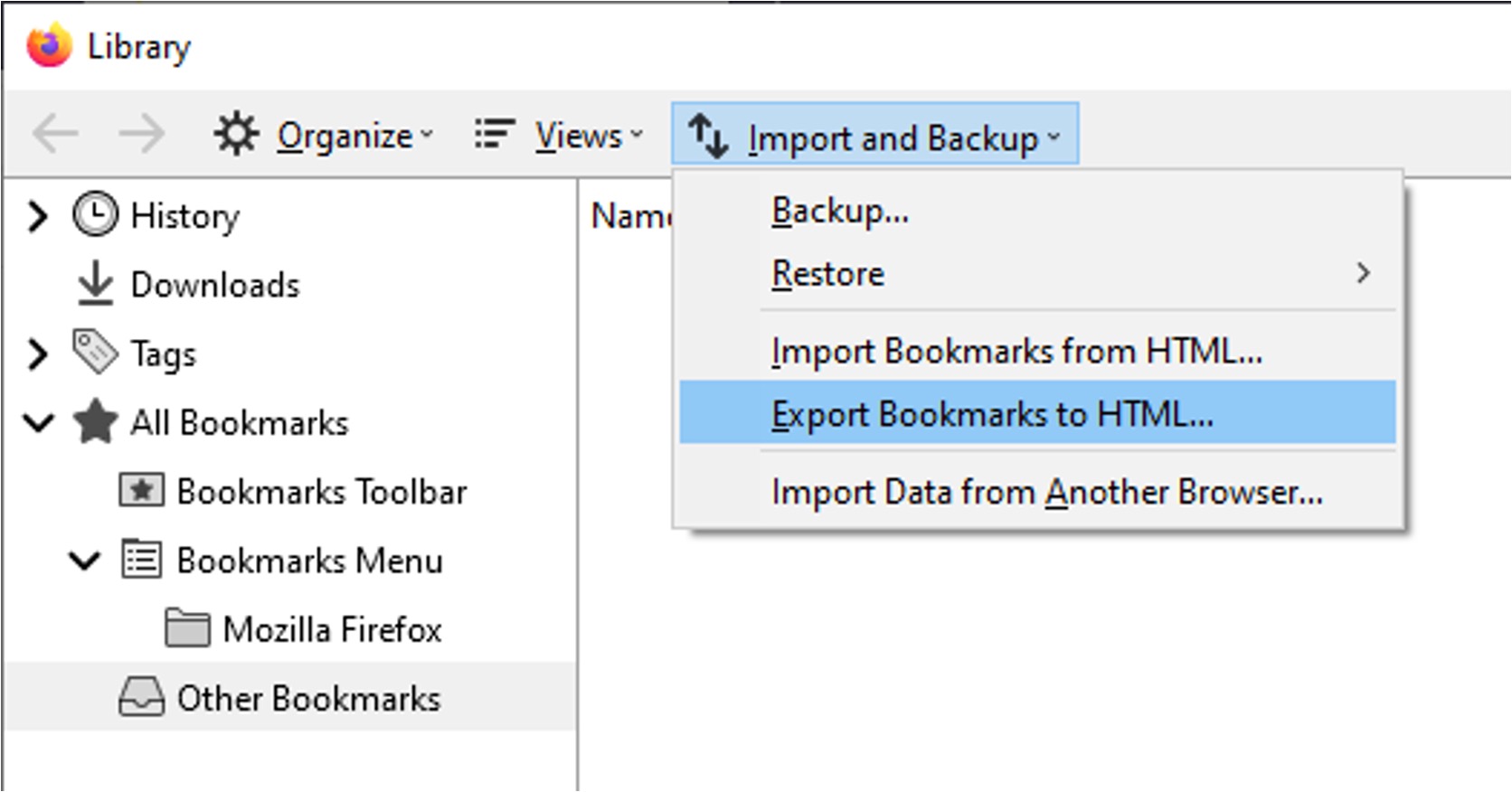Introduction
Backing up your Firefox bookmarks is a crucial task to ensure that your valuable collection of saved websites and web pages remains safe and accessible. Whether you're switching to a new computer, safeguarding against data loss, or simply seeking peace of mind, having a backup of your bookmarks can be a lifesaver. In this guide, we'll walk you through the step-by-step process of backing up and restoring your Firefox bookmarks, empowering you to take control of your browsing experience.
Firefox, a popular web browser known for its robust features and customizable interface, allows users to effortlessly manage and organize their bookmarks. However, unforeseen events such as system crashes, hardware failures, or accidental deletion can lead to the loss of these bookmarks. By proactively creating backups, you can mitigate the risk of losing access to your carefully curated collection of websites and resources.
In the following sections, we will delve into the essential steps for backing up and restoring your Firefox bookmarks. You will learn how to access the Bookmarks Manager within Firefox, export your bookmarks to a file, save the backup in a secure location, and import the bookmarks back into Firefox when needed. By following these instructions, you can safeguard your bookmarks against unexpected data loss and seamlessly transfer them to new devices or browser installations.
Whether you're a casual internet user, a dedicated researcher, or a professional relying on specific web resources, the ability to preserve and transfer your bookmarks is invaluable. With this guide, you'll gain the knowledge and confidence to protect your browsing history and maintain easy access to your favorite websites, ensuring that your online journey remains uninterrupted and stress-free. Let's embark on this empowering journey to safeguard your Firefox bookmarks and take control of your digital experience.
Step 1: Accessing the Bookmarks Manager
Accessing the Bookmarks Manager in Firefox is the initial step towards safeguarding your valuable collection of bookmarks. The Bookmarks Manager serves as a central hub for organizing, editing, and exporting your bookmarks, providing you with the necessary tools to manage your browsing history effectively.
To access the Bookmarks Manager in Firefox, you can follow these simple steps:
-
Open Firefox: Launch the Firefox web browser on your computer. You can do this by clicking on the Firefox icon in your desktop or taskbar, or by searching for "Firefox" in your computer's application menu.
-
Navigate to the Bookmarks Menu: Once Firefox is open, look for the bookmarks menu located at the top of the browser window. You can find this menu below the address bar and tabs. Click on the "Bookmarks" option in the top navigation bar to reveal a drop-down menu.
-
Select "Show All Bookmarks": Within the bookmarks drop-down menu, you will find the option to "Show All Bookmarks." Click on this option to open the Bookmarks Manager in a new tab.
-
Alternatively, Use the Keyboard Shortcut: If you prefer using keyboard shortcuts, you can access the Bookmarks Manager by pressing "Ctrl+Shift+B" on Windows or "Command+Shift+B" on Mac. This quick shortcut allows for efficient access to the Bookmarks Manager without navigating through the menu options.
Upon following these steps, you will be greeted with the Bookmarks Manager interface, providing you with a comprehensive view of your bookmarks, bookmark folders, and bookmark tags. From here, you can proceed to the next steps in the backup process, such as exporting your bookmarks to a file for safekeeping.
Accessing the Bookmarks Manager is the gateway to managing and preserving your bookmarks, empowering you to take control of your browsing experience and ensure the security of your valuable web resources. By familiarizing yourself with this essential feature of Firefox, you can proactively protect your browsing history and seamlessly transfer your bookmarks to new devices or browser installations.
Step 2: Exporting Bookmarks
Exporting your bookmarks from Firefox is a fundamental step in creating a backup of your valuable collection of saved websites and web pages. By exporting your bookmarks to a file, you can ensure that they are safely preserved and accessible for future use, even in the event of unexpected data loss or when transitioning to a new device or browser installation.
To export your bookmarks from Firefox, follow these straightforward steps:
-
Access the Bookmarks Manager: As outlined in the previous section, access the Bookmarks Manager within Firefox by clicking on the "Bookmarks" option in the top navigation bar and selecting "Show All Bookmarks." Alternatively, use the convenient keyboard shortcut "Ctrl+Shift+B" on Windows or "Command+Shift+B" on Mac to open the Bookmarks Manager.
-
Select "Import and Backup": Within the Bookmarks Manager, locate the "Import and Backup" option in the top menu. Click on this option to reveal a drop-down menu containing various bookmark management functions.
-
Choose "Export Bookmarks to HTML": From the "Import and Backup" menu, select the "Export Bookmarks to HTML" option. This action prompts a file explorer window to appear, allowing you to choose the location and name for the exported bookmarks file.
-
Save the Bookmarks File: Navigate to the directory where you want to save the bookmarks file, and provide a descriptive name for the file. Consider choosing a location that is easily accessible and memorable, such as your desktop or a dedicated folder for browser backups. Once the location and name are specified, click "Save" to export the bookmarks to the designated file.
By following these steps, you have successfully exported your Firefox bookmarks to an HTML file, creating a backup that can be stored securely and accessed whenever needed. This backup file contains a snapshot of your bookmarks, including the URLs and titles of the saved web pages, ensuring that your browsing history is safeguarded against unforeseen events and ready for seamless restoration.
Exporting your bookmarks empowers you to take proactive measures in preserving your valuable web resources, providing peace of mind and flexibility in managing your browsing history. With the backup file in hand, you can proceed to the next step of saving the file in a secure location, ensuring that your bookmarks remain safe and accessible for the long term.
Step 3: Saving the Bookmarks File
After successfully exporting your Firefox bookmarks to an HTML file, the next crucial step is to ensure that the backup file is securely saved in a location that is easily accessible and well-protected. Saving the bookmarks file in a strategic and reliable location is essential for safeguarding your valuable collection of web resources and ensuring that they remain available for future use.
When it comes to saving the bookmarks file, consider the following best practices to enhance the security and accessibility of your backup:
-
Choose a Secure Storage Location: Select a storage location for the bookmarks file that offers a balance of accessibility and security. Consider using a dedicated folder for browser backups, a cloud storage service with robust security measures, or an external storage device such as a USB flash drive or an external hard drive. By choosing a secure storage location, you can mitigate the risk of data loss and ensure that your bookmarks are readily available when needed.
-
Organize and Label the Backup: Upon saving the bookmarks file, it's beneficial to organize and label it effectively for easy identification and retrieval. Consider creating a clear and descriptive label for the file, incorporating the date of the backup or any relevant details that can help you distinguish it from other files. Additionally, if you are maintaining multiple backup versions, organize them in a systematic manner to streamline future access and management.
-
Implement Redundancy Measures: To further enhance the security of your bookmarks backup, consider implementing redundancy measures by saving copies of the file in multiple locations. This redundancy can include storing the file on both a local storage device and a cloud-based platform, providing an additional layer of protection against potential data loss scenarios.
-
Regularly Update the Backup: As your collection of bookmarks evolves with new additions and modifications, it's important to update the backup file regularly to reflect the latest changes. By periodically refreshing the backup with the most current bookmarks, you ensure that your backup remains synchronized with your browsing history, minimizing the risk of data discrepancies.
By following these best practices, you can effectively save the bookmarks file in a secure and accessible manner, empowering you to maintain a reliable backup of your valuable web resources. This proactive approach to safeguarding your bookmarks ensures that they remain protected against unforeseen events and readily available for seamless restoration when needed.
Step 4: Importing Bookmarks
Importing bookmarks into Firefox is a straightforward process that allows you to restore your saved web resources from a backup file, seamlessly integrating them back into your browsing experience. Whether you're setting up a new device, recovering from data loss, or simply updating your bookmarks collection, the ability to import bookmarks ensures that your valuable web resources remain accessible and organized within your browser.
To import bookmarks into Firefox from a backup file, follow these simple steps:
-
Access the Bookmarks Manager: Begin by opening the Bookmarks Manager within Firefox. You can do this by clicking on the "Bookmarks" option in the top navigation bar and selecting "Show All Bookmarks." Alternatively, use the keyboard shortcut "Ctrl+Shift+B" on Windows or "Command+Shift+B" on Mac to access the Bookmarks Manager efficiently.
-
Select "Import and Backup": Within the Bookmarks Manager interface, locate the "Import and Backup" option in the top menu. Click on this option to reveal a drop-down menu containing various bookmark management functions.
-
Choose "Import Bookmarks from HTML": From the "Import and Backup" menu, select the "Import Bookmarks from HTML" option. This action prompts a file explorer window to appear, allowing you to navigate to the location where your bookmarks backup file is stored.
-
Select the Backup File: Navigate to the directory where your bookmarks backup file is saved, and choose the file for import. Once you've selected the backup file, click "Open" to initiate the import process.
-
Verify the Imported Bookmarks: After selecting the backup file, Firefox will proceed to import the bookmarks from the file into your browser. Once the import process is complete, you can verify that your saved web resources have been successfully integrated into your bookmarks collection.
By following these steps, you can effectively import your bookmarks from a backup file, ensuring that your valuable web resources are seamlessly restored within Firefox. Whether you're recovering from data loss or transitioning to a new device, the ability to import bookmarks empowers you to maintain a consistent and organized browsing experience, preserving your carefully curated collection of web resources.
Importing bookmarks into Firefox is a valuable capability that provides peace of mind and flexibility in managing your browsing history. By leveraging this feature, you can confidently maintain control over your bookmarks and seamlessly integrate them into your browsing environment, ensuring that your online journey remains uninterrupted and stress-free.







